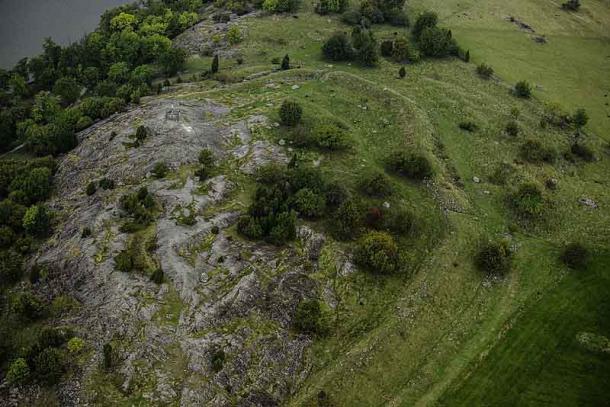
The ground was frozen and the field was covered with a fine layer of snow –
ideal conditions for this type of archaeological research
[Credit: Arne Anderson Stamnes, NTNU University Museum]
GPR sends electromagnetic signals down into the subsurface, and some of these signals are reflected back when they encounter structures deeper down in the ground. This is how archaeologists obtain a kind of X-ray of objects two to three meters below the surface.
Stamnes quickly finds that the ground here is content rich, to put it mildly.
"The results are astonishingly good and they whet your appetite for more, says Nordland county archaeologist Martinus A. Hauglid.
One of the region's largest burial mounds
"Our findings included traces of 15 burial mounds, and one of them appears to contain a boat grave. Both the size and design of the burial mounds are typical of the period 650 to 950 CE—that is, what we call the Merovingian Period and Viking Age," says Stamnes.
"A lot of the mounds are big. The largest burial mound has an inner dimension of 32 meters and must have been a towering presence in the landscape," he says.
Read the rest of this article...
